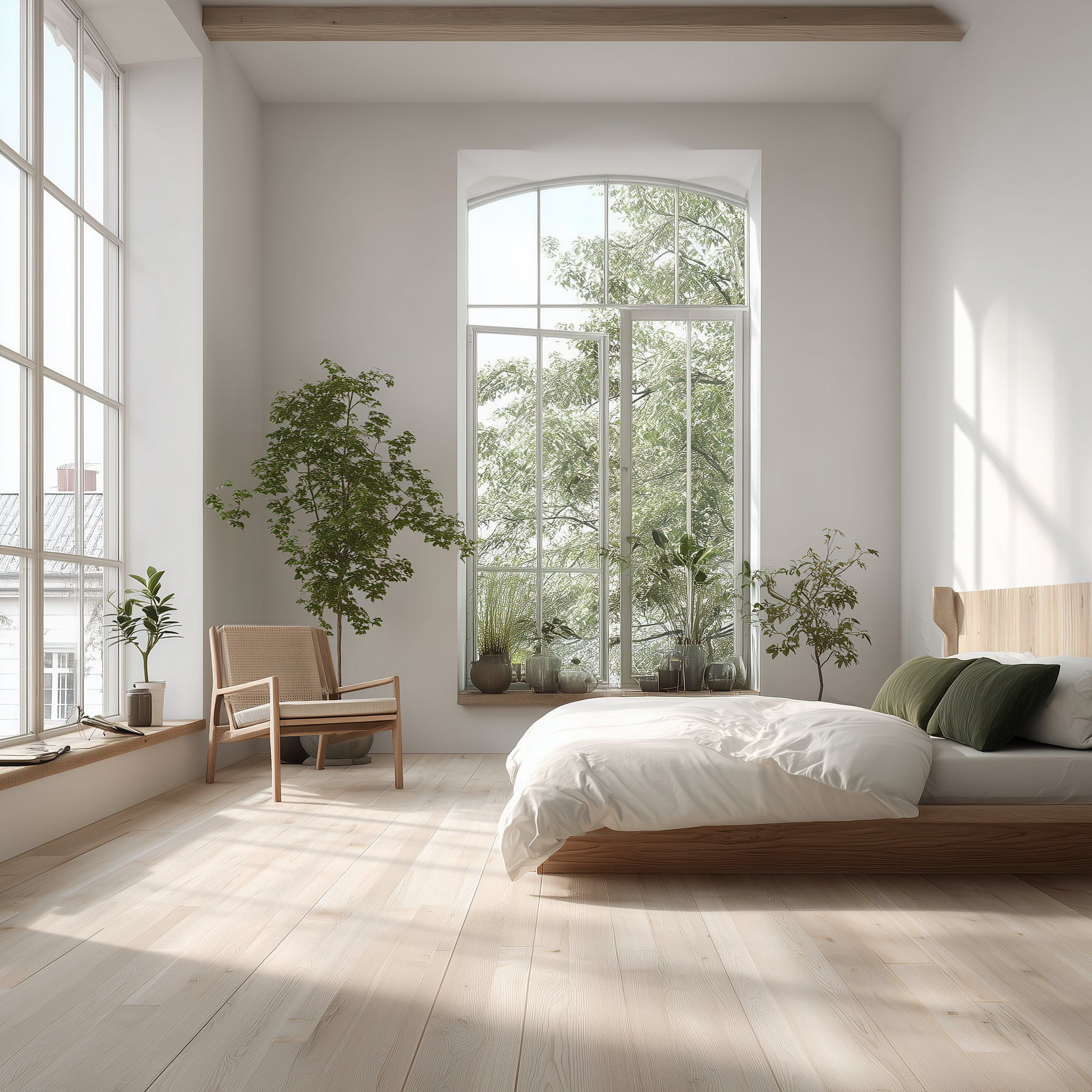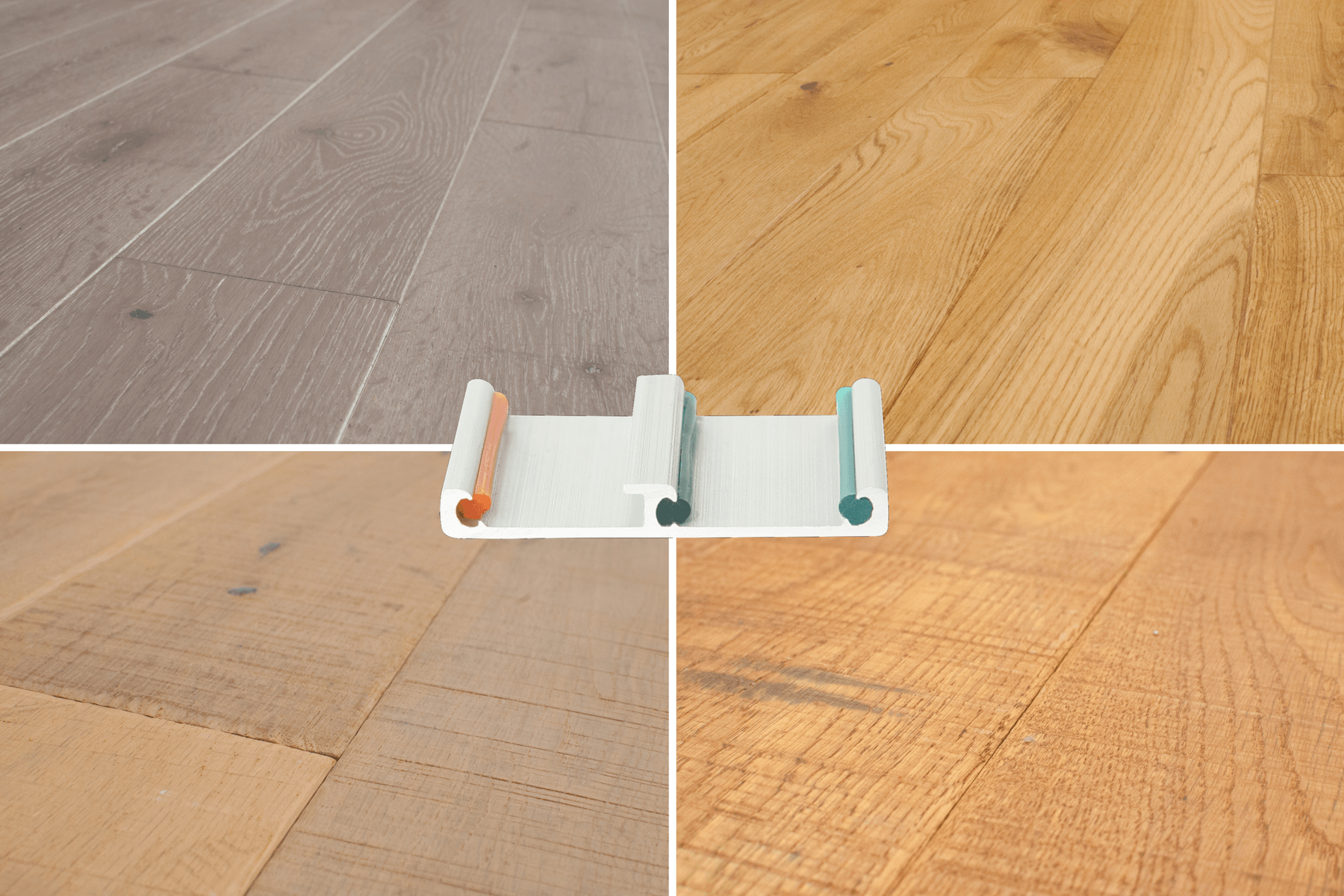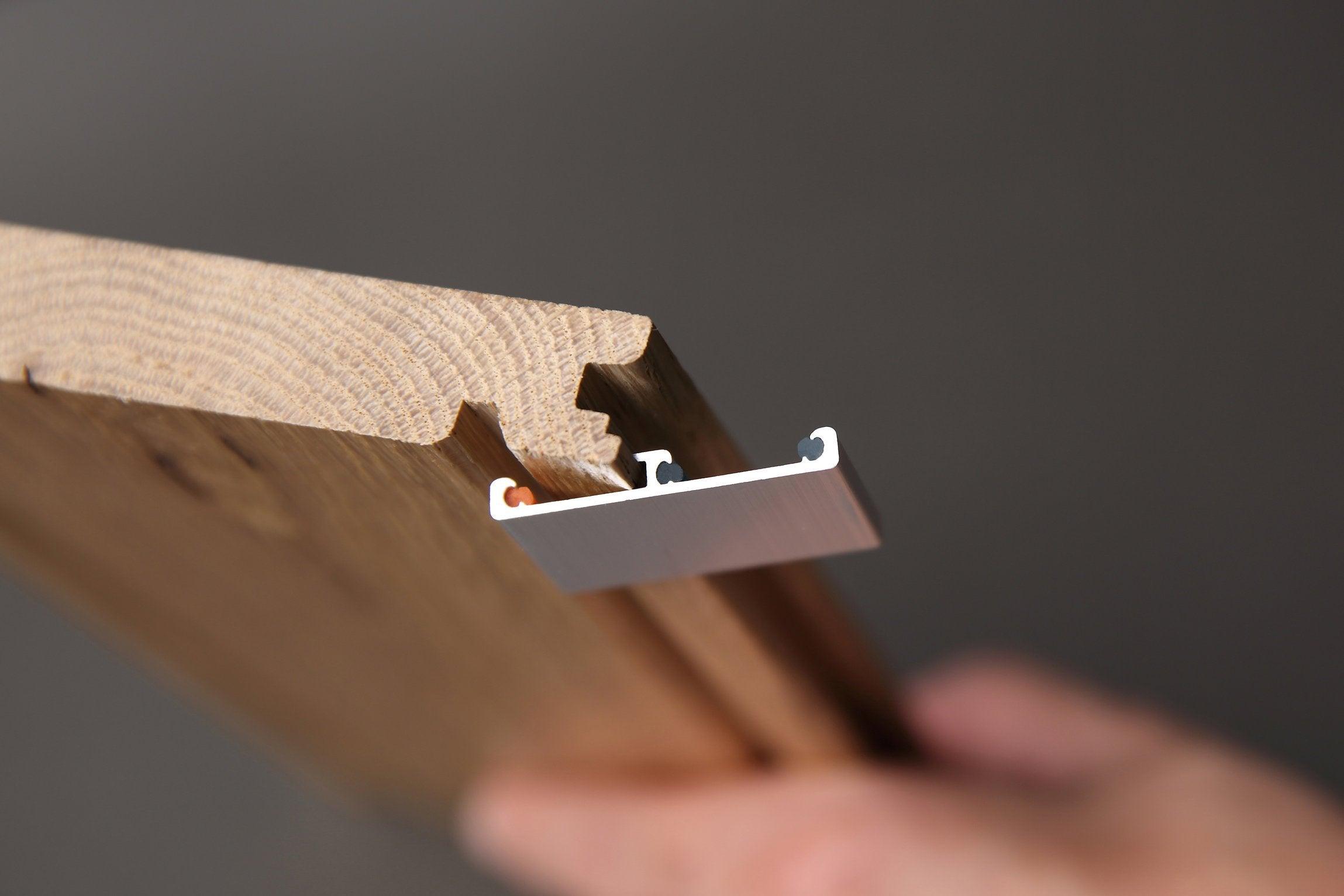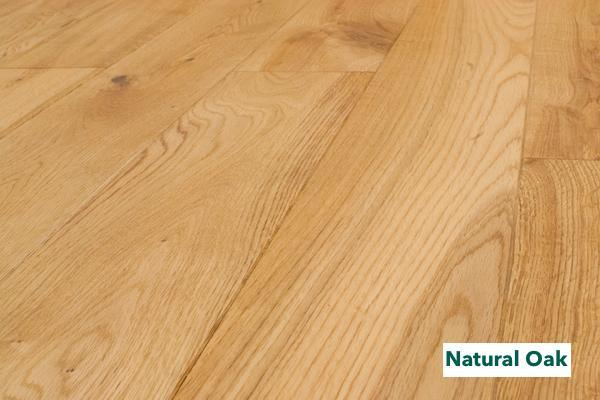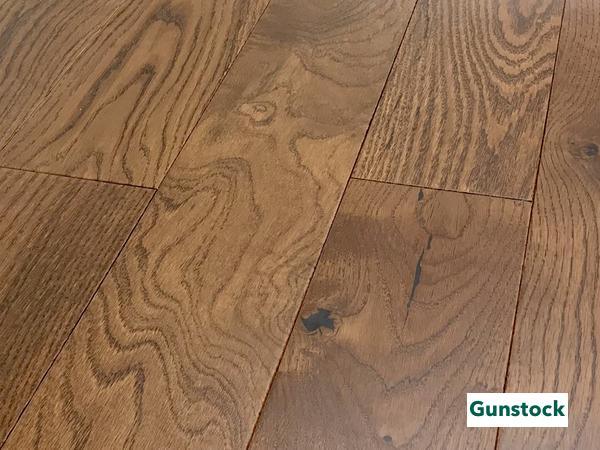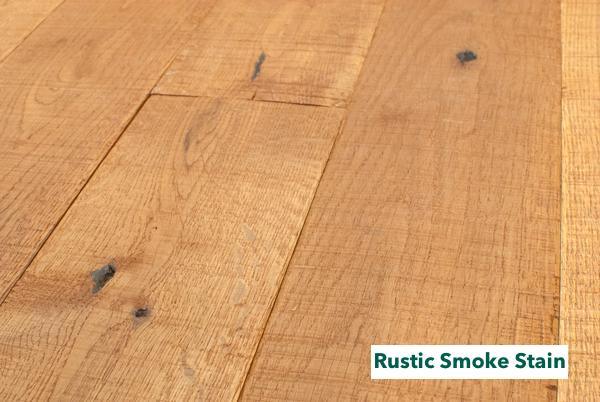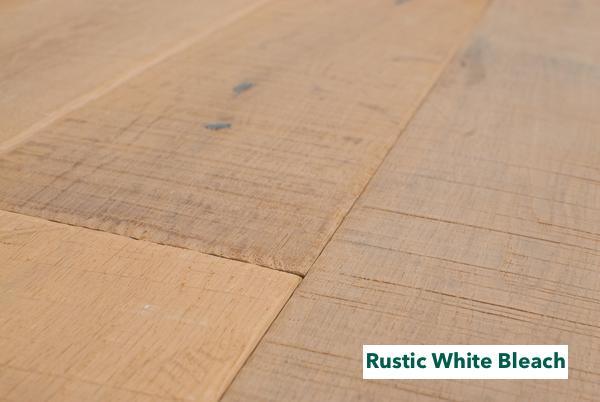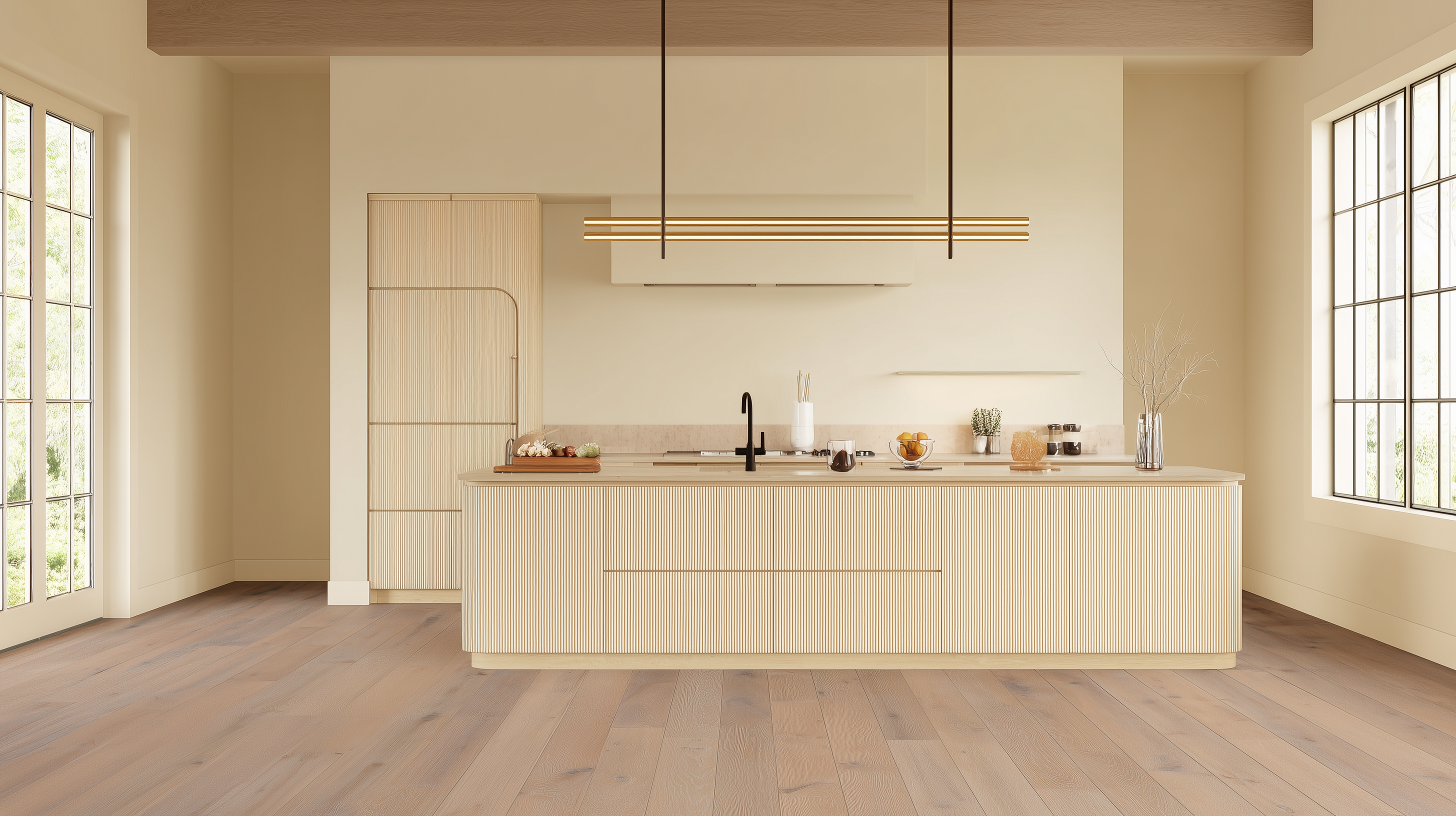Beyond their structural role, floors define the character of a home. They can make a space feel brighter, cozier, or more expansive with just a shift in tone and texture. Hardwood, in particular, offers a timeless foundation—equally at ease in historic houses as in modern interiors. Whether revealed under years of carpet or newly installed, wood floors set the first impression and shape the atmosphere of a room.
But how do you know what you are working with? Is your floor solid hardwood, engineered, or even a well-made imitation? And once you identify it, how do you choose the right type of wood for your home and lifestyle? Here is a design-minded guide to decoding your floors and selecting the right option for the future.

How to Tell What Type of Hardwood Floor You Have
Bear in mind, your floor might look like hardwood, but it could be something else. To save money and time, know what kind of floor you have before deciding whether to replace or refinish.
Start by looking at an inconspicuous section of the floor, such as under a cabinet or in the closet. You may have to rip up a section of the carpet or scrape the finish off the wood to tell what it is.
There are multiple ways to determine the type of flooring and whether it's engineered or solid wood.
Grain, Scraping, and Scent: Clues in the Wood
Common hardwoods have an easily visible grain structure. In most cases, the grain characteristics make it easy to identify the hardwood on the floors. For example, maple has close curly grains. Oak generally has straight, porous grains with lighter and darker streaks.

Identify the Wood Through A Scraping Test
If your floor has layers of old finishes, you may need to scrape some off to make an accurate ID. Is it hardwood or softwood? When you push your fingernail into the wood, it will leave a dent in a softwood like pine. A thumbnail won't scratch a hardwood.
Species like maple and birch can look alike with a dark stain. Strip or sand down to bare wood to make an identification. You can always re-stain the section afterward.
Real Hardwood Has A Scent
All wood has a unique scent, and the natural odor may last for years. If you can't identify the wood by sight, try using your nose. You'll need to cut a small piece or sand a section to remove any stain or finish. Only someone with the first-hand experience can ID wood by smell, but it can be a useful method.
Is It Solid or Engineered?
To know whether your floor contains solid wood or engineered planks, you'll need to see a cross-section of the board. Solid wood has grains running in a continuous pattern throughout the entire section.

Engineered wood looks like a sandwich with a wood veneer on top and many compressed layers underneath.
If you are still unsure, you can go online to check.
Go Online to Identify Your Type of Wood Floor
The Wood Database has a digital catalog of wood species. It's a handy resource for identifying wood around your home. You'll find lists of various woods based on grain direction, density, wood color, hardness, and other useful factors.
Of course, another option is to talk with a pro.
When to Ask a Pro
If you can't identify your wood floor, consult a local flooring professional or lumber yard for help. In most cases, you can call them and send a picture to get an identification.
The Three Main Categories of Wood Floors
Typically, there are three flooring types, a softwood like pine, hardwood like oak, or engineered flooring.
Softwood - Pine is the softwood most frequently used for flooring, but it's not the only one. Other commonly available wood species are fir, cypress, cedar, spruce, and hemlock. You can identify softwood with a scratch test. If you can make a mark easily with your thumbnail, it's a softwood.
Engineered Wood – From the surface, it's challenging to tell solid hardwood from engineered hardwood. That's because an engineered floor uses a veneer for real wood on top. Under the top layer are alternating layers of various materials glued together under high pressure. The best way to tell is from the side. If you can take up a board, you'll know right away.
Hardwood – Once again, the only way to be sure is to look at the end grain. A solid board has the grain running from top to bottom. An engineered floor has layers. If you can't pull up a board, you can sometimes use a mirror to look at the end grain in an area such as a closet or remove a baseboard section.
If you like the floor's look and if it's solid hardwood, consider refinishing it. Check with a reputable floor finishing company to weigh your options. If refinishing isn't an option, it's time to choose a new floor.
Choosing New Wood Floors: Six Key Decisions
To answer this question, you'll need to make six critical decisions upfront.
Solid or Engineered?
When we think of a wood floor, we visualize tight-fitting planks of smooth wooden boards, neatly installed across a room. There are two ways to achieve that look, with solid wood planks or with an engineered floor. An engineered floor uses a thin wood top layer bonded to layers of other materials to reduce the natural expansion and contraction that happens with natural wood.
Which one is right for you? Solid hardwood can last a lifetime...or two when maintained correctly. Refinishing transforms it into a brand new floor every ten years or so. Hardwood can add up to 2.5% of a home's resale value. Solid wood feels stronger underfoot and is quieter.
Engineered floors can save some money upfront. Depending on the depth of the top veneer, you might be able to refinish it once.
For a more in-depth understanding, Easiklip has a blog comparing engineered vs. hardwood flooring.
Pre-finished or Site-Finished?
You can purchase prefinished planks or have an installer finish the floor on-site. Pre-finished boards save time and mess. You can walk on them immediately, and there are no fumes or dust hazards.
To finish an on-site floor means multiple operations of sanding, dusting, staining, drying, finishing, and more drying time. It can take several days and fill your home with fumes. Most likely, you'll need to leave home for a few days. However, you have more control over the stain and finish. The result is a uniformly smooth finish across the entire room.
Which Finish? Oil or Polyurethane?
When selecting a wood floor, part of the decision rests on the finish type. You have two categories, oil or polyurethane.
The oil penetrates the wood, creating a soft, matte finish that brings out the wood grain's natural character. It does not prevent liquids from seeping in and staining like polyurethane. Polyurethane is a hard protective coating, but you can see scratches more easily.
Oil finishes require more frequent maintenance, but polyurethane holds up better to heavy traffic.
What Species of Wood?
The primary factor in choosing a hardwood species is the cost. The most used wood in North America is oak. It's tough, abundant, and looks great. Whether natural or stained, oak has a porous grain that fits any decor.
If you want more color and character, look at walnut or cherry. Maple, ash, and hickory have unique, tight grains. The wood is typically pale to honey-colored with rich, warm tones.
Of course, there are many exotic choices like teak, mahogany, or bamboo. It comes down to where your budget and taste intersect.
Grain patterns differ from species to species and from tree to tree. Species like oak and ash have a straight grain pattern, whereas fruit and nut woods have curved, unique grains.
What Width of Planks?
If you ripped up carpeting in an old house, you might find thin strips of hardwood about 1.5 inches wide. Strips are hardwood boards from about 1 inch to 3 inches wide. Planks run from 3 inches to 8 inches, with most flooring around 4 to 6 inches.
Typically, the wider the plank, the more it costs, and the more luxurious it looks. There are fewer seams, which is an advantage over thinner boards.
Which Installation Method? Floating or Fixed?
You have two more choices here with either a floating or permanent installation. Traditionally, hardwood floors get nailed or glued to the subfloor permanently. However, there are some floors, like Easiklip, that float. That means they lie on top of the subfloor. By doing so, the wood can naturally expand and contract without causing buckling or warping. A floating floor takes less time to install, is easy to take up and make repairs, or relocate if necessary.
Design Considerations: Color and Style
Now that you've determined what floor you currently have, the next question to answer is, what is the best wood flooring for my home? The answer lies somewhere between the home's design and personal taste. There are several considerations for choosing a floor that you'll love for many years, including the color and current trends.
At one time, avocado green was the "in" color for appliances. Today, everyone wants stainless steel. The color is a critical factor for new hardwood floors. It can be a match or a counterpoint to other room features such as countertops or cabinets.
Let's take a look at these design considerations.
What Color Wood Floor Should I Choose?
The two primary considerations here are the
- size of the room and the
- color of your furniture.
If it's a small room with little natural light, choose a lighter or neutral color for the wood. It will brighten the space.

Try and choose a wood species or stain color that contrasts with your primary furniture color. In other words, if you have gray furniture, don't select gray floors. It will make the space look dull and cluttered.
Natural colored floors with matte or satin finishes hide scratches the best for high-traffic areas. For a contemporary look, choose dark floors to complement light-colored walls.

Keep up with current trends if you plan to sell within the next 5 to 10 years. Let's find out what's trending this year.
Trends That Still Matter
If you want the floors to match the current trends of 2020 and beyond, there are five areas you need to check:
Colors and Tones
Lighter colors are what buyers want now. We're talking about natural, blonde, gray-washed, and bleached wood colors.
Another trend is "high variation," mixing dark and light boards on the same floor.

The Texture of The Wood
Not everyone wants a bowling alley finish. Like distressed furniture, distressed, hand-scraped, and wire brushed hardwood add a unique look that smooth finishes can't match. Combining texture with bleaching provides a unique beachy, cottage feel to any space. Texturing delivers a softer, historical sense to the floor.

Finishes Make A Difference
More buyers are shunning high gloss for satin and matte finishes. Another popular finish for hardwood is oil. These options don't show scratches as much as glossy finishes and are easier to maintain. With less light reflection, the natural beauty of the wood comes through.
Plank Layouts and Patterns
Changing the pattern from straight to diagonal or herringbone can create an ultra-elegant floor. Patterns can turn a plain wood floor into something fabulous. Using wider planks also adds that air of elegance and prestige.
Another trend is mixing board widths to create an eye-catching statement piece.
Go with a Non-Traditional Wood
Instead of buying fresh lumber or prefinished wood in a box, trendy designers seek out reclaimed hardwood. This lumber comes from remodeling old homes or from building demolitions. With a little TLC and refinishing, the lumber looks great and tells a story with every nick, scrape, or faded cigarette burn.
In a nutshell, the hardwood floor trends for 2020 are lighter colors, more texture, exciting patterns, and recyclable wood sources.
Thickness Matters
The thicker the wood, the more durable it is. Most solid hardwood planks are between 5/16 and 3/4 inches thick. A thicker floor stands up to traffic and can be refinished multiple times over the decades.
If you opt for engineered floors, you'll still want the top veneer layer to be as thick as possible should you need to repair it. Typically, the veneer thickness is only .5 millimeters to four millimeters. That's not much if you experience a deep gouge. In most cases, you can't refinish engineered, and you'll need to replace it.
For more reasons why the wood's thickness matters, check out our post, "5 Proven Hardwood Flooring Thickness Categories."
The Best Wood for Hardwood Floors
Identifying and selecting wood flooring is part practical decision-making, part design vision. The right choice will transform how you experience your home every day—adding warmth, value, and a sense of continuity.
Trends may shift, but quality wood floors, particularly oak, remain a constant across centuries of interiors. Whether you uncover an existing floor or decide to start fresh, invest in a surface that reflects both your lifestyle and your design sensibility. Done well, your floors will outlast trends and grow more beautiful with time.
Ready to explore wood floors for your project?
Discover Easiklip’s solid white oak floors that clip together without nails or glue, making them one of the simplest DIY hardwood options available.
Browse styles here: https://easiklip.ca/collections/all
Order a free sample: https://easiklip.ca/pages/order-samples
See pricing: https://easiklip.ca/pages/pricing
